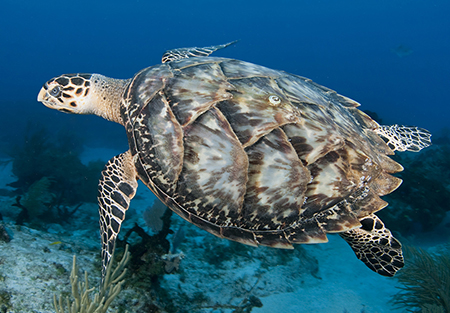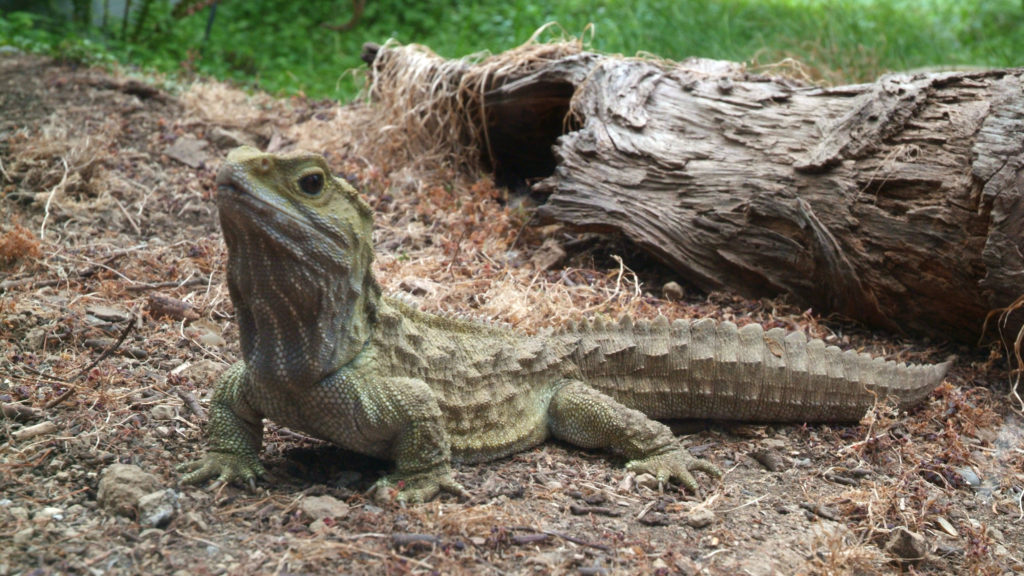Many species of reptiles kept as pets are commonly bred in captivity. Many are easy to care for because they are hardy animals both in captivity and in their natural habitats. There is no shortage of these critters either in captivity or in the wild.
However, just like there are endangered mammals and birds, there are also endangered reptiles. Although we’d never keep a critically endangered species as a pet or encourage trade in these animals, we can always fantasize about how cool it would be to keep some as pets in a perfect world.
In this blog article, we’ll name some of the critically endangered reptiles that we think would make amazing pets for one reason or another. Since we’ve never kept or seen these reptiles in real life (except for maybe at a zoo if we’re lucky!), this article won’t focus on care tips or handling techniques.
Instead, we’ll discuss why these endangered species are unique and what makes us so interested in them. Perhaps we’ll even raise some awareness and inspire conservation efforts to protect them.
Gharial/Gavial (Gavialis gangeticus)
The gharial or gavial is a crocodilian known for its very unique snout and appearance. Unlike typical crocodiles and alligators, the gavial’s mouth and nose are long and narrow rather than triangular in shape.
The narrowness of the mouth combined with sharp teeth that lace together in an interlocking pattern makes it perfectly suited to catch fish, which just happen to make up this reptile’s main diet.
Topping off the long mouth is a bulbous snout which is said to resemble an earthenware pot known as a ghara in Hindi. This is where the gharial’s common name is derived. It’s believed that this nose bulb is used in mating behaviors such as bubbling water to attract a mate and as a visual indicator of gender.

The gavial is native to India. While this fascinating creature used to inhabit nearly all the major rivers in India, it can now only be found in two percent of these waterways. The numbers of the gavial have been declining largely due to hunting for trophies, indigenous medicine, and consumption of the reptile’s eggs.
We think the gavial would make a cool pet because of its very particular mouth and nose. Unlike a croc or gator, the gavial actually doesn’t possess a whole lot of jaw strength. This means that although we’re not sure we’d recommend it, you could probably hold a gavial with much less fear of being bitten.
We’re sure that a gavial’s bite would still be pretty painful, but probably not nearly as bad as that of a reptile with as much jaw strength and ferocity as a crocodile.
Cayman Island Blue Iguana (Cyclura lewisi)
As its name suggests, the Cayman Island blue iguana is a lizard with a stunning color palate. At rest, these iguanas have a grayish complexion, but when breeding season hits, or when the iguana becomes agitated or excited, it transforms into a brilliant azure blue color.
The Cayman Island blue iguana is endemic to the Cayman Islands and is actually considered to be one of the most endangered lizards alive today. Back in 1940 when this reptile was originally described taxonomically, it was considered to be on the brink of extinction, and with human interference, whether accidental or intentional, its numbers have dwindled even further. In fact, in 2002, the population of these lizards remaining in the wild was estimated to be a mere ten to twenty-five animals!

Efforts to preserve the species have definitely been ongoing. As recently as 2004, a wildlife conservation group released hundreds of animals back into the wild. Additionally, at least five separate nonprofit organizations are working with the Grand Cayman government with the hope of preserving this colorful iguana.
Considered to be the largest native land animal living on Grand Cayman, the Cayman Island blue iguana maxes out around twenty to thirty inches in body length with a tail that is usually around the same length, putting the average animal anywhere between forty to sixty inches in total length. Despite this large size, the iguana is still preyed upon by non-native, invasive species such as feral cats and dogs.
While there are certainly blue iguanas available to reptile hobbyists nowadays, these are just variants of the very common green iguana and are still of the genus and species Iguana iguana. We think it would be beyond rewarding to be able to keep a breeding population of these “true” blue iguanas and be able to help contribute to the conservation efforts as well as enjoy the beauty of such a flashy lizard.
Hawksbill Sea Turtle (Eretmochelys imbricata)
We admit, having a pelagic reptile of any kind as a pet seems no easy feat. But, in a perfect world, wouldn’t it be cool to have a salt water aquarium full of tropical fish and a sea turtle or two?
Like all sea turtle species, hawksbill turtles are endangered due to human interference. Believe it or not, people eat sea turtle eggs and mature sea turtles around the world, despite the protected status of these majestic ocean reptiles. Hawksbills in particular also have very beautifully designed shells which people love to collect. The fishing industry is also a factor in the endangered status of the hawksbill. Often times, these turtles will become accidentally entangled in fishing nets which can lead to drowning.

Out of all the sea turtle species, the hawksbill turtle is one of the smaller species. Adults will grow to be around forty-five inches long and weigh around 150 pounds.
Hatchling hawksbill sea turtles have heart-shaped carapaces which eventually elongate. When mature, the shells have overlapping serrated scutes, or bony plates. They also have unusually sharp points on their nose/mouth area that resemble a bird of prey’s beak, which is how they received their common name. And yet another characteristic feature of the hawksbill is a pair of claws that adorn each flipper. Overall, the hawksbill sea turtle is a very visually striking reptile.
As reptile lovers, many of us are familiar with the struggle infant sea turtles of all species must undergo when it comes to safely making their first journey to the sea. The mother turtles lay their eggs in a hole dug into a sandy beach and some months later, baby turtles emerge. Because sea turtles make mass migrations to beaches to lay their eggs, the baby turtles tend to all hatch around the same time, meaning that tons of baby sea turtles end up crawling out of the sand and into the ocean.
Because there are so many, they wind up being easy prey targets for predatory animals, namely birds and crabs. In addition, due to human encroachment and installation of street lights and hotel lights along beach fronts, baby sea turtles often wind up crawling towards civilization instead of their true home, which also has an impact on the wild populations.
We’d truly enjoy raising a baby hawksbill sea turtle and watching it grow into a regal adult. But we’ve got to admit that “Finding Nemo” has us a little biased towards that idea. Can’t you just picture them swimming around and speaking in surfer lingo?
Tuatara (Sphenodon punctatus)
What makes the tuatara so fascinating to scientists and reptile enthusiasts alike is that this animal is part of its own distinct lineage – the order Rhynchocephalia. This means that although the tuatara very much resembles a lizard, it is in fact, not a lizard!
From a scientific stand point, the closest living ancestor of the tuatara is the squamates, which of course are lizards and snakes. Scientists study the tuatara in order to learn more about the history and appearance of early reptiles called diapsids.
Tuataras are endemic to New Zealand. Because they are so isolated geographically coupled with the fact that they take many years to reproduce, the population of these reptiles has dwindled placing them on the endangered species list.

Quite possibly one of the coolest things about the tuatara is that it possesses a third eye! This third eye appears in the middle of the reptile’s forehead and is called a parietal eye. Just like normal eyes used for seeing, the tuatara’s parietal eye has its own lens, cornea, retina with rod-like structures, and is connected to the brain via a degenerated nerve.
When tuataras are babies, the parietal eye appears as a translucent spot in the middle of the animal’s head, but sadly, as tuataras mature, the eye becomes covered with scales and pigment. This is why you don’t see photos of adult tuataras with three eyes, although we think that would be pretty freaky!
As far as function is concerned, scientists have deduced that the purpose of the parietal eye is to help with absorption of UV rays to help the tuatara produce vitamin D. It’s also been postulated that the eye helps with thermoregulation as well as determining light and dark/day and night cycles.
Unlike other reptiles, tuataras thrive in much lower temperatures. They can be active in temperatures as low as forty-one degrees Fahrenheit and temperatures over eighty-two degrees Fahrenheit can actually be fatal to them. This unique animal has the lowest resting body temperature of any reptile. This also means they have a particularly slow metabolism.
Tuataras have unusually long life spans. In captivity, they are estimated to be able to live up to two hundred years old! In fact, Henry the tuatara, who lives in the New Zealand Zoo, became a father at the ripe old age of one hundred and eleven!
Since they have such low metabolic rates (as we already mentioned), tuataras take a long time to reach sexual maturity and a long time to reproduce. Tuataras aren’t ready to mate until they are ten or twenty years old! From start to finish, the entire reproductive cycle can take two to five years, which is the longest of any reptile.
So, if the abundance of weird factoids and cool tidbits of knowledge about this “living fossil” reptile hasn’t convinced you that a tuatara would make a fascinating pet, we’re not sure you’re reading the right blog!
Conclusion
We have already mentioned that this a purely hypothetical blog article. As reptile lovers, we are definitely not endorsing capturing any of the endangered species, exporting them, and/or keeping them as pets for our own entertainment and pleasure.
We are fully aware that these reptiles are in need of serious help and this article is written from a place of wishful thinking. In a perfect world, these wonderful and rare species wouldn’t need our help to survive in the wild and we wouldn’t have to feel bad about having them be a part of our families as pets.
But alas, all we can do for now is discuss how neat it would be to care for these reptiles and hope that this article inspires people to try and help with conservation efforts.
If you want to help preserve these magnificent animals, we recommend donating to a conservationist group. There are multitudes of organizations that focus on protecting specific species as well as plenty of groups that specialize in general endangered species preservation efforts.
Rather than have us tell you who we donate to, we feel you should do your research and find a group whose goals, morals, and standards are in line with your own.
